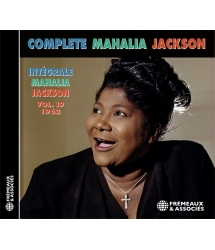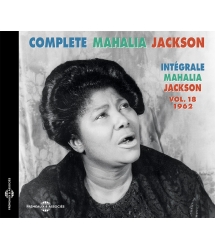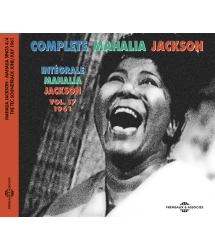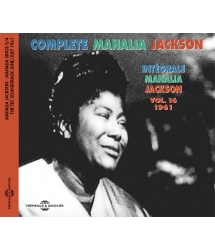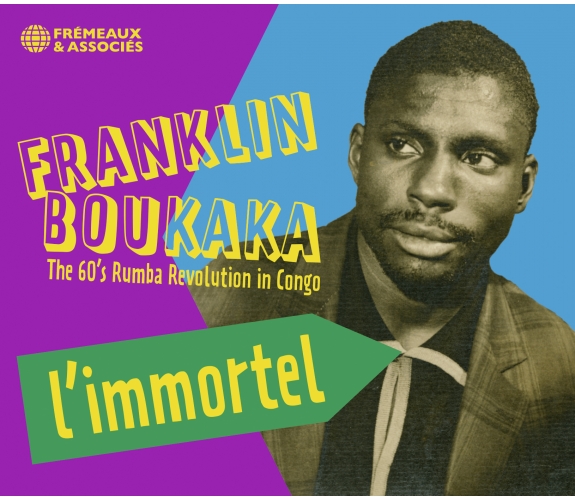- Notre Catalogue
- Philosophie
- Philosophes du XXème siècle et d'aujourd'hui
- Histoire de la philosophie (PUF)
- Contre-Histoire et Brève encyclopédie par Michel Onfray
- L'œuvre philosophique expliquée par Luc Ferry
- La pensée antique
- Les penseurs d'hier vus par les philosophes d'aujourd'hui
- Textes philosophiques historiques interprétés par de grands comédiens
- Histoire
- Livres
- Sciences Humaines
- Paroles historiques
- Livres audio & Littérature
- Notre Catalogue
- Jazz
- Blues - R'n'B - Soul - Gospel
- Rock - Country - Cajun
- Chanson française
- Musiques du monde
- Afrique
- France
- Québec / Canada
- Hawaï
- Antilles
- Caraïbes
- Cuba & Afro-cubain
- Mexique
- Amérique du Sud
- Tango
- Brésil
- Tzigane / Gypsy
- Fado / Portugal
- Flamenco / Espagne
- Yiddish / Israël
- Chine
- Tibet / Népal
- Asie
- Océan indien / Madagascar
- Japon
- Indonésie
- Océanie
- Inde
- Bangladesh
- URSS / Chants communistes
- Musiques du monde / Divers
- Musique classique
- Compositeurs - Musiques de film - B.O.
- Sons de la nature
- Notre Catalogue
- Jeunesse
- Philosophie
- Nouveautés
- Comment commander ?
- Recevoir le catalogue
- Manifeste
- Dictionnaire











- Notre Catalogue
- Philosophie
- Philosophes du XXème siècle et d'aujourd'hui
- Histoire de la philosophie (PUF)
- Contre-Histoire et Brève encyclopédie par Michel Onfray
- L'œuvre philosophique expliquée par Luc Ferry
- La pensée antique
- Les penseurs d'hier vus par les philosophes d'aujourd'hui
- Textes philosophiques historiques interprétés par de grands comédiens
- Histoire
- Livres
- Sciences Humaines
- Paroles historiques
- Livres audio & Littérature
- Notre Catalogue
- Jazz
- Blues - R'n'B - Soul - Gospel
- Rock - Country - Cajun
- Chanson française
- Musiques du monde
- Afrique
- France
- Québec / Canada
- Hawaï
- Antilles
- Caraïbes
- Cuba & Afro-cubain
- Mexique
- Amérique du Sud
- Tango
- Brésil
- Tzigane / Gypsy
- Fado / Portugal
- Flamenco / Espagne
- Yiddish / Israël
- Chine
- Tibet / Népal
- Asie
- Océan indien / Madagascar
- Japon
- Indonésie
- Océanie
- Inde
- Bangladesh
- URSS / Chants communistes
- Musiques du monde / Divers
- Musique classique
- Compositeurs - Musiques de film - B.O.
- Sons de la nature
- Notre Catalogue
- Jeunesse
- Philosophie
- Nouveautés
- Comment commander ?
- Recevoir le catalogue
- Manifeste
- Dictionnaire
INTEGRALE 1954-1955
MAHALIA JACKSON
Ref.: FA1315
Direction Artistique : JEAN BUZELIN
Label : Frémeaux & Associés
Durée totale de l'œuvre : 1 heures 4 minutes
Nbre. CD : 1
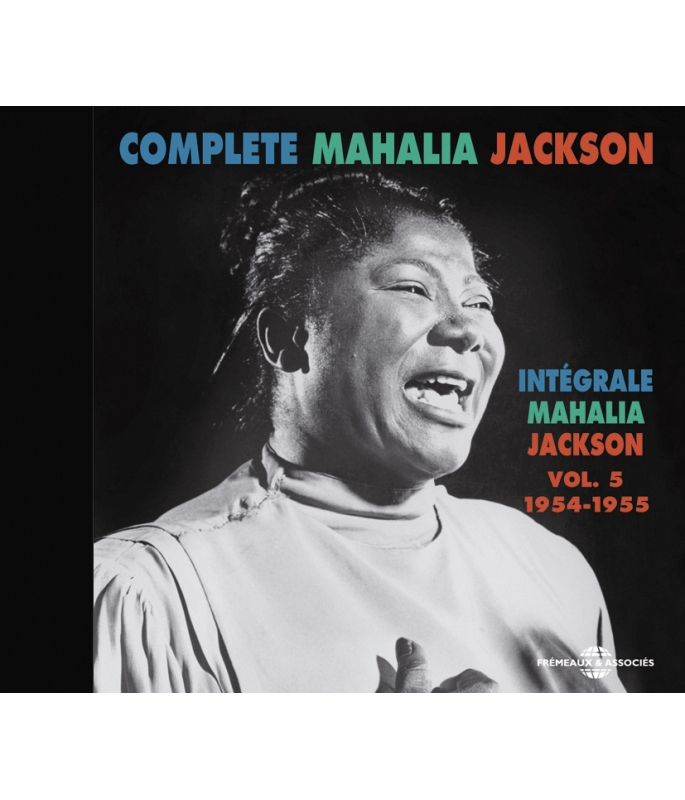
INTEGRALE 1954-1955
"Avec ses premiers enregistrements pour Columbia, Mahalia Jackson entame une irrésistible ascension qui la conduira à la reconnaissance universelle."
“With her first recordings for Columbia, Mahalia Jackson embarked on an unstoppable ascension which would lead to universal acclaim.”
Patrick Frémeaux & Jean Buzelin
1954 (COLUMBIA) :
THE TREASURES OF LOVE • ONE GOD • A RUSTY OLD HALO • JESUS MET THE WOMAN AT THE WELL • I’M GOING TO LIVE THE LIFE I SING ABOUT IN MY SONGS • WALK OVER GOD’S HEAVEN • YOU’LL NEVER WALK ALONE • DIDN’T IT RAIN • WHEN THE SAINTS GO MARCHING IN • SOMEBODY BIGGER THAN YOU AND I • WHEN I WAKE UP IN GLORY • OUT OF THE DEPTHS • OH LORD, IS IT I? • AMAZING GRACE • JESUS • I WILL MOVE ON UP A LITTLE HIGHER • KEEP YOUR HAND ON THE PLOW •
1955 (COLUMBIA) :
I SEE GOD • HIS HANDS • YOU’RE NOT LIVING IN VAIN.
Droits : Groupe Frémeaux Colombini SAS. Mahalia Jackson Complete edition.
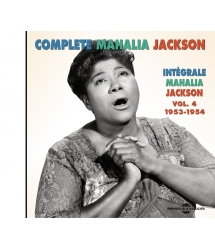
1953-1954
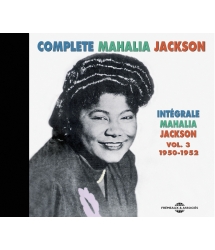
1952-1952
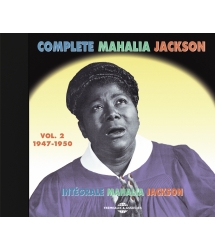
1947-1950
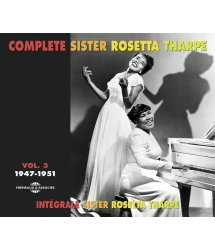
1947-1951
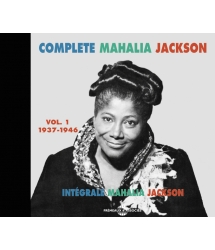
1937-1946
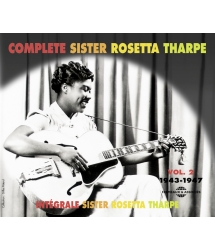
1943-1947
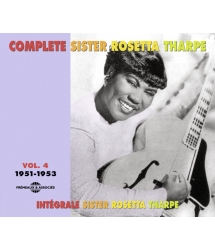
1951-1953
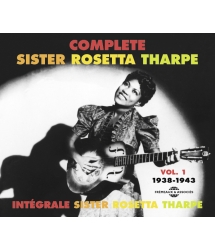
1938-1943
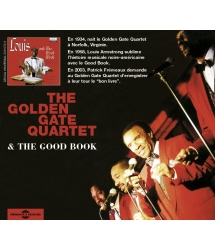
THE GOOD BOOK
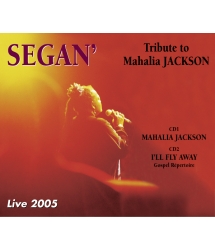
LIVE 2005










-
PisteTitreArtiste principalAuteurDuréeEnregistré en
-
1The Treasures Of LoveMahalia Jackson00:03:232007
-
2One GodMahalia Jackson00:02:152007
-
3A Rusty Old HaloMahalia Jackson00:02:212007
-
4Jesus Met The Woman At The WellMahalia Jackson00:02:282007
-
5I 'm Going To Live The Life I Sing About in My SongMahalia Jackson00:02:392007
-
6Walk Over God's HeavenMahalia Jackson00:02:382007
-
7You'll Never Walk AloneMahalia Jackson00:03:192007
-
8Didn't It RainMahalia Jackson00:02:362007
-
9When The Saints Go Marching InMahalia Jackson00:03:582007
-
10Somebody Bigger Than You And IMahalia JacksonH.Heath00:03:382007
-
11When I Wake up in GloryMahalia Jackson00:04:202007
-
12Out of the DepthsMahalia Jackson00:03:452007
-
13Oh Lord is It !Mahalia Jackson00:02:522007
-
14Amazing GraceMahalia Jackson00:05:402007
-
15JesusMahalia Jackson00:02:202007
-
16I Will Move On Up A Little HigherMahalia JacksonV.Davis00:05:302007
-
17Keep Your Hand On The PlowMahalia Jackson00:02:322007
-
18I See GodMahalia Jackson00:03:092007
-
19His HandsMahalia Jackson00:02:452007
-
20You're Not Living In VainMahalia Jackson00:02:402007
COMPLETE MAHALIA JACKSON Vol 5
COMPLETE MAHALIA JACKSON
INTÉGRALE MAHALIA JACKSON VOL. 5
1954-1955
Lorsque Mahalia Jackson franchit les portes des Studios Columbia, sur la 30e Rue à New York, le 22 novembre 1954, réalise-t-elle qu’elle est en train d’effectuer le grand tournant de sa carrière ? Jusqu’à présent, en dépit d’une popularité ascendante auprès d’un large auditoire, tant américain qu’européen, son principal public restait sa communauté. Ses disques Apollo se vendaient principalement à la population noire pour laquelle ils étaient essentiellement destinés. Mais, compte tenu de la renommée grandissante de la chanteuse, une marque indépendante comme Apollo n’avait ni les moyens ni les possibilités de promotion et de diffusion dont bénéfiçiaient les grandes compagnies. Aussi, son entrée après moult hésitations (1) chez Columbia va propulser Mahalia Jackson sur une scène musicale d’une tout autre dimension.
Deux jours avant cette date, le 20 novembre, Mahalia avait été invitée au Chicago Meeting Harvest Moon Festival où se retrouvaient les vedettes du cinéma, du théâtre, de la télévision et de la radio. Le lendemain, toujours à Chicago, elle participait à son neuvième “Mahalia Jackson Show” sur la chaîne radiophonique CBS, en fait un “Thanksgiving Show” pour le Thanksgiving Day, la Fête d’Actions de Grâce, où elle interpréta en direct, My Faith Looks Up To Thee, When The Saints Go Marching In et Bless This House (1).
Prévenue quelques jours avant par Mitch Miller, son nouveau producteur, elle débarque donc à New York juste pour entrer en studio, en compagnie de sa fidèle pianiste Mildred Falls et de son nouvel organiste Ralph Jones qui l’accompagne depuis l’été dernier. Durant deux soirées, Mahalia va enregistrer pas moins de dix-sept morceaux sous la houlette du directeur artistique George Avakian et de l’ingénieur du son Bill Russell. Sont également présents Joe Bostic, son manager depuis six ans, son vieil admirateur John Hammond qui va relater l’événement pour le New York Times, et d’autres journalistes convoqués pour “l’événement”. “Pour les débuts de Mahalia sur l’étiquette Columbia, écrit Avakian, le directeur, Mitch Miller, lui avait demandé de préparer quelques chants nouveaux afin de les publier sous forme de disques séparés, et j’espérais moi-même pouvoir commencer un album de spirituals et de “gospel songs” de son propre choix. Mahalia nous surprit et nous ravit ; en quelques heures, elle enregistra une douzaine de faces pour Miller et près d’un album et demi pour moi. La seule raison pour laquelle nous nous arrêtâmes fut qu’il y avait une limite à ce que le marché pouvait absorber en une fois.” (2)
On remarque immédiatement qu’apparaît cette dualité qui se présente à tout artiste qui entre dans le show biz – quelle que soit sa discipline – : comment concilier sa propre expression avec les impératifs du commerce. “Il veut que mes disques deviennent plus populaires” dit Mahalia Jackson en parlant de Mitch Miller. Ce qui indigne sa tante Bessie qui lui répond en substance : “Dieu est la personne la plus populaire du monde ; “populaire”, c’est Dieu !” (3) Cette ambivalence entre le gospel singing authentique et l’entertainement (la distraction, la variété) ne manque certainement pas de créer le doute chez Mahalia.
Rapidement, et à quelques jours d’intervalle, deux 45 tours simples (singles) sont mis sur le marché. Le premier (4-40411) comprend A Rusty Old Halo et The Treasures Of Love, sortes de gospels pop imposés par Miller qui les pousse commercialement en direction du plus large public, donc largement blanc. Le résultat ne se fait pas attendre : A Rusty Old Halo devient N° 1 au Top 40 Pop (variétés), ce qui signifie que le disque enregistre la plus grosse vente tous genres musicaux confondus. Le second (4-40412) comprend deux véritables gospel songs : Walk Over God’s Heaven, composé par Thomas A. Dorsey, et Jesus Met The Woman At The Well, grand succès des Pilgrim Travelers créé en 1949 et repris simultanément par le Golden Gate Quartet (4). Ce disque est, bien sûr, le préféré de la presse et des animateurs des radios noires. Une balle dans chaque camp. Le lancement par la Columbia de Mahalia Jackson s’accompagne d’une grosse campagne publicitaire. La chanteuse apparaît dans la plupart des émissions de télévision, est photographiée dans Life en train de faire la cuisine pour Duke Ellington, etc.
Un peu plus tard, un second single orienté vers la pop est publié sous le n° 4-40473. Il comprend One God et You’ll Never Walk Alone, un ancien standard de Broadway dû aux plumes de Richard Rogers et Oscar Hammerstein, redevenu brusquement à la mode quelques mois plus tôt grâce au crooner noir Roy Hamilton qui l’a propulsé à la première place du hit-parade Rhythm & Blues. Chaque maison de disque se doit aussitôt de “couvrir” ce tube, et Mahalia Jackson doit accepter (de bonne grâce ?) d’y prêter sa voix, non sans grandeur ni émotion ; elle conservera d’ailleurs cette chanson dans son répertoire de récitals. Entre-temps, dès le 28 novembre, la chanteuse a repris ses programmes radio hebdomadaires durant lesquels elle y inclut ses nouvelles chansons et, le 22 décembre, elle chante au Stone Temple Baptist. L’orientation prise par sa carrière l’amène également à se produire de plus en plus pour des publics blancs. Ainsi, après vingt-sept années de résidence à Chicago, elle chante pour la première fois dans sa ville devant un auditoire blanc !
Après son vingtième “Mahalia Jackson Show” diffusé en direct le 6 février 1955, la chanteuse interrompt ses programmes radio. Mais, grâce à son fidèle ami et complice Studs Terkel qui l’assiste dans toutes ses émissions, la WBBM-TV de Chicago lui propose un “Mahalia Jackson Show” télévisé sur sa 2e chaîne. Il sera tourné le 13 mars au Garrick Theatre. Accompagnée par Mildred Falls, Ralph Jones et le Jack Halloran Quartet (groupe vocal blanc qui a participé à ses émissions radiophoniques), Mahalia Jackson devient la première artiste noire de l’histoire à qui la télévision offre son propre show. Toujours à Chicago, elle donne un benefit concert à l’Evanston High School gymnasium, pour aider l’église de son ami le révérend Clay Evans (5).
Au printemps est publié le premier album 33 tours de Mahalia Jackson. Composé par George Avakian, grand admirateur de la chanteuse avec qui il a d’excellentes relations de travail et d’amitié, il ne comprend que des negro spirituals et des gospel songs authentiques (6). Avakian rédige le texte de pochette et surnomme Mahalia “The World’s Greatest Gospel Singer”. “Le répertoire que nous présentons, écrit-il, est typique de la variété des spirituals et gospel songs authentiques. I’m Going To Live The Life I Sing About In My Song (“je vais vivre la vie que je chante dans ma chanson”) écrite par le mentor et le vieil ami de Mahalia, Thomas A. Dorsey, résume parfaitement la philosophie personnelle de Mahalia vis-à-vis de la religion et de l’art. (…). Walk Over God’s Heaven (Marche dans le ciel de Dieu) est l’arrangement par le Professeur Dorsey d’un poème familier, tandis que When I Wake Up In Glory (Quand je m’éveillerai dans la gloire) et Keep Your Hand On The Plow (Ne lâche pas la charrue) – connu habituellement sous le titre de Hold On – sont les deux versions personnelles imaginées par Mahalia de deux spirituals traditionnels ; le second est aussi dansant que son interprétation pleine de swing de When The Saints Go Marching In (Quand les Saints vont marchant) (…). Jesus, Out Of The Depths (Hors des profondeurs) et Oh Lord Is It I ? (Oh Seigneur, est-ce moi ?) sont de typiques gospels dont la valeur est éternelle. (…). Jesus Met The Woman At The Well (Jésus rencontra la femme à la fontaine) est un exemple d’histoire biblique adaptée à la forme du gospel song.” (2) Ajoutons que Mahalia reprend deux de ses chevaux de bataille, Didn’t It Rain (Ne pleuvait-il pas) et surtout I Will Move On Up A Little Higher (Je veux m’élever encore un peu), le morceau qui l’avait véritablement lancé en 1947. Il est toutefois permis de préférer la version originale (7). Intitulé “Mahalia Jackson Sings” et publié sous la référence Columbia CL 644, cet album, qui reçoit 5 étoiles dans la revue Down Beat, est édité en France par Philips (07.077) qui confie la traduction du texte à Boris Vian. Et depuis ce temps, il a été constamment réédité dans le monde entier sous le titre de “The World’s Greatest Gospel Singer”.
Mahalia chante une nouvelle fois au Carnegie Hall de New York, cette fois-ci pour la Fête des Mères, et parmi ses apparitions marquantes, signalons un concert à l’Olympia Stadium de Detroit où, devant 15 000 personnes, elle partage l’affiche avec Ella Fitzgerald, Count Basie, Lionel Hampton, Dinah Washington et les Clara Ward Singers.
Le 31 mai, Mahalia est à nouveau convoquée aux studios Columbia pour une session de trois jours. À cette occasion, on lui offre (sic) une interprétation de dix chants de Noël, en prévision, on s’en doute, d’un album à mettre dans les souliers qui vont s’aligner devant les cheminées des bonnes familles américaines ! Mais auparavant, nous allons faire une légère entorse à notre chronologie : en effet, les cinq titres enregistrés ce 31 mai n’auraient pas tous tenu sur notre CD. Aussi, les avons nous remplacés par les trois réalisés le lendemain et qui n’entraient pas dans le sujet. Nous retrouverons donc les dix chants de l’album de Noël regroupés au début de notre Volume 6, ce qui renforcera par là même leur unité.
Ce 1er juin, au même endroit, Mahalia se retrouve en studio en compagnie d’un autre orchestre comprenant une large section de cordes, dirigé cette fois par Ray Ellis, arrangeur qui ne manque pas de références dans le domaine de la “variété jazzée”. Trois morceaux du genre sont mis en boîte ce jour-là, dont les deux premiers, I See God et His Hands, vont faire l’objet d’un nouveau 45 tours (4-40529) à nouveau orienté vers le “grand public”. On cherchera en vain quelques traces de gospel songs dans ces trois chansons évidemment imposées par son producteur Mitch Miller, si ce n’est, peut-être, dans le second titre, écrit par le chanteur-guitariste texan Carl Stuart Hamblen, l’auteur de It Is No Secret, enregistré par Mahalia en 1951 pour Apollo (8). Stuart Hamblen (1908-1989), après avoir été un “cow-boy chantant” dans de nombreux westerns, se spécialisera dans le country gospel au début des années 50 (9). Avec le second de ces trois jours de studio s’achève notre cinquième volume. Un disque contrasté qui rend bien compte de la possible incertitude dans laquelle se trouve Mahalia à l’aube de sa carrière mondiale. Une carrière qui va, toutefois, s’accompagner d’innombrables merveilles, car la chanteuse, après ces “hésitations”, et malgré quelques autres compromissions, redressera sensiblement la barre. En effet, en dépit des calculs intéressés de sa maison de disques, le public ne cessera de lui réclamer des chants authentiques. Ces chants qui viennent du plus profond d’elle-même, et qu’elle interprétera toujours comme nulle autre. Et son public, de quelque bord qu’il soit, conquis et bouleversé par sa voix et son chant extraordinaires, ne s’y trompera pas. En art, la vérité finirait-elle toujours par triompher ?
Jean Buzelin
Auteur de Negro Spirituals et Gospel Song, Chants d’espoir et de liberté (Éd. du Layeur/Notre Histoire, Paris 1998).
© Frémeaux & Associés – Groupe Frémeaux Colombini SAS 2007
Notes :
1) Voir Complete Mahalia Jackson Vol.4 (FA 1314). Cinq titres extraits des “Mahalia Jackson Shows”
diffusés en 1954/55 ont été publiés ultérieurement par Columbia (LP 34073). N’étant pas à l’origine destinés au disque, nous ne pouvons les inclure ici pour des questions de droits.
2) Texte de pochette traduit par Boris Vian.
3) In Mahalia de Laurraine Goreau.
4) Voir Golden Gate Quartet Vol. 2 (FA 5093).
5) À écouter : Rev. Clay Evans, I’ve Got a Testimony (FA 426).
6) L’album comprend les titres 4, 5, 6, 8, 9, 10, 11, 12, 14, 15, 16 de notre présent CD. Notons également que Mahalia aurait aimé enregistrer un autre morceau de Dorsey, It Don’t Cost Very Much, mais elle devra attendre un an et demi pour le faire.
7) Voir Complete Mahalia Jackson Vol. 1 (FA 1311).
8) Voir Complete Mahalia Jackson VoL. 3 (FA 1313).
9) D’après Gérard Herzhaft, in Guide de la Country Music et du Folk (Fayard, Paris 1999).
Ouvrages consultés :
Laurraine Goreau : Mahalia (Lion Pub., UK 1976 – 2e édition)
Jules Schwerin : God To Tell It : Mahalia Jackson (Oxford University Press, 1992)
Anthony Heilbut : The Gospel Sound (Limelight Ed., NYC 1992 – 4e édition)
Certains disques, dont de rares 45 tours, proviennent des collections Friedrich Mühlöcker, Per Notini, Étienne Peltier et Robert Sacré. Nous les remercions chaleureusement ainsi que nos amis Jean-Paul Guiter, Robert Laughton et Gayle Wald.
Photos et collections : X (D.R.)
english notes
When Mahalia Jackson crossed the threshold of the Columbia Studios at 30th Street in New York, on 22 November 1954, did she realise that this was to prove a huge turning point in her career? Until now, in spite of increasing popularity with a large audience, both American and European, her main fans were her own people. Her Apollo records sold principally to the black community at which they were chiefly aimed. However, in view of the singer’s growing popularity an independent label like Apollo had neither the means nor the promotional or distribution facilities which bigger companies enjoyed. Hence her arrival, after much hesitation (1), at Columbia would propel Mahalia into a completely different musical dimension.
Two days before, on 20 November, Mahalia had been invited to the Chicago Meeting Harvest Moon Festival, joining stars of cinema, theatre, television and radio. The following day, still in Chicago, she took part in her ninth “Mahalia Jackson Show”, which was called the “Thanksgiving Show” to celebrate Thanksgiving Day, on CBS radio when she interpreted live My Faith Looks Up To Thee, When The Saints Go Marching In and Bless This House (1).
Informed a few days beforehand by Mitch Miller, her new producer, she turned up at the New York studios, accompanied by her faithful pianist Mildred Falls and her new organist Ralph Jones who had been accompanying her since the previous summer. In the space of two evenings Mahalia recorded no fewer than seventeen titles under the leadership of artistic director George Avakian and sound engineer Bill Russell. Joe Bostic, her manager of six years, was also present along with her old admirer John Hammond, who reported the event for the New York Times, and other journalists invited to witness the “happening”. “For Mahalia Jackson’s debut on the Columbia label”, wrote Avakian, “manager Mitch Miller had asked her to prepare several new songs in order to publish them as separate records, and I myself hope to begin an album of her own choice of spirituals and gospel songs. Mahalia surprised and delighted us: in a few hours she cut a dozen sides for Miller and almost an album and a half for me. The only reason we stopped was because there was a limit to what the market could absorb at any one time”. (2)
One immediately notices the appearance of the duality that faced any type of performer entering show biz: how to reconcile their own form of expression with commercial demand. “She told Aunt Bessie about it on the phone – “he wants my records to be more popular”. Aunt Bessie’s indignation crinkled across the long-distance: “God is the most popular person in the world. ’Popular’ is God! And remember baby, He loves you best.” (3) This ambivalence between authentic gospel singing and entertainment was undoubtedly a problem for Mahalia.
Very quickly, and at only a few days’ interval, two 45 singles were launched on the market. The first (4-40411) included A Rusty Old Halo and The Treasures Of Love, both the sort of Gospel pop that insisted on by Miller with the aim of reaching a wider public i.e. mainly white. The result was not slow in coming: A Rusty Old Halo reached N° 1 in the Top 40 Pop which meant that the record’s sales were the highest for any type of music. The second (4-40412) comprised two true gospel songs: Walk Over God’s Heaven, composed by Thomas A. Dorsey, and Jesus Met The Woman At The Well, a big hit for the Pilgrim Travelers created in 1949 and reprised simultaneously by the Golden Gate Quartet (4). Of course, this record was the favourite with the black press and radio compères. So, both publics were satisfied.
Columbia accompanied their launch of Mahalia Jackson with a huge publicity campaign. The singer appeared on most TV
programmes, was photographed in Life magazine cooking for Duke Ellington etc. A little later, a second pop single (N° 4-40473) was issued comprising One God and You’ll Never Walk Alone, an old Broadway standard by Richard Rogers and Oscar Hammerstein, suddenly made popular again a few months earlier thanks to black crooner Roy Hamilton who took it to the top of the Rhythm & Blues hit parade. Hence every label rushed to produce a cover version and Mahalia Jackson had to agree (reluctantly?) to interpret it, nonetheless with dignity and feeling and she did keep the song in her recital repertoire. Meanwhile, from 28 November, she had again taken up her weekly radio programme in which she included several new songs and on 22 December she sang at the Stone Temple Baptist Church. The new direction her career had taken also led her to appear increasingly before white audiences. After living in Chicago for twenty-seven years she sang for the first time in her city in front of a white audience!
After her twentieth “Mahalia Jackson Show” broadcast live on 6 February 1955, she interrupted her radio programmes. However, thanks to her long-time friend and partner Studs Terkel who was alongside her on all her broadcasts, WBBM-TV Chicago offered her a televised “Mahalia Jackson Show” on its 2nd channel. It was filmed 13 March at the Garrick Theatre. Accompanied by Mildred Falls, Ralph Jones and the Jack Halloran Quartet (a white vocal group which had appeared on her radio shows), Mahalia Jackson became the first black performer ever to have their own TV show. Still in Chicago, she gave a benefit concert at the Evanston High School gymnasium in aid of the church of her friend the Reverend Clay Evans. (5)
In the Spring Mahalia Jackson’s first 33 rpm album was issued. Put together by George Avakian, a great admirer of the singer with whom he got on extremely well both at work and socially, it comprised only authentic Negro spirituals and gospel songs (6). Avakian wrote the sleeve notes and dubbed Mahalia “The World’s Greatest Gospel Singer”. “The compilation we present here”, he wrote “is typical of the variety of authentic spirituals and gospel songs. I’m Going To Live The Life I Sing About In My Song, written by Mahalia’s mentor and old friend Thomas A. Dorsey, sums up her personal philosophy vis-à-vis religion and art perfectly. Walk Over God’s Heaven is an arrangement by Professor Dorsey of a popular poem, while When I Wake Up In Glory and Keep Your Hand On The Plough – more usually known as Hold On – are Mahalia’s versions of two traditional spirituals; the second also swings as much as her interpretation of When The Saints Go Marching In; Jesus Out Of The Depths and Oh Lord Is It I? are both typical enduring gospel songs. Jesus Met The Woman At The Well is an example of a biblical parable adapted to a gospel song”.(2) In addition Mahalia reprised two of her favourites, Didn’t It Rain and in particular I Will Move On Up A Little Higher, the title that really launched her in 1947. However, many prefer the original version. (7) Entitled “Mahalia Jackson Sings” and published under Columbia CL 644, this album that received 5 stars in Down Beat magazine, was issued in France by Philips (07.077) with Boris Vian translating the sleeve notes. Since that time it has been constantly reissued throughout the world under the title “The World’s Greatest Gospel Singer”.
Mahalia sang again at the Carnegie Hall, this time on Mothers’ Day, and another outstanding performance came with a concert at the Detroit Olympia Stadium where, in front of 15,000 people, she shared the billing with Ella Fitzgerald, Count Basie, Lionel Hampton, Dinah Washington and the Clara Ward Singers.
On 31 May, Mahalia was invited back to the Columbia studios for a three day session. On this occasion she was offered ten Christmas carols, no doubt in preparation for the stockings soon to be lined up on American Christmas hearths! But beforehand we are going to make a slight detour in our chronology: in fact, there was not enough room on our CD for the five titles recorded on 31 May. Hence, we have replaced them by the three recorded the following day which were not part of the carol programme. The ten songs from the Christmas album are now grouped together at the beginning of Volume 6 thus forming a complete set.
We find her again the following day, accompanied by a band led by Ray Ellis, an arranger well known in the field of “variety jazz”. Three titles in this genre were recorded of which the first two, I See God and His Hands, would form a new 45rpm (4-40529), again aimed at a mass audience. We look in vain for any hint of gospel in these three songs obviously imposed on Mahalia by Mitch Miller, except perhaps on the second title, written by Texan singer/guitarist Carl Stuart Hamblen, composer of It Is No Secret, recorded by Mahalia in 1951 for Apollo (8). Hamblen, after having been a “singing cowboy” in numerous westerns, went on to specialise in country gospel in the early 50s (9).
Our fifth volume ends with this second of this three-day studio session. A mixed record which clearly reveals Mahalia‚s probable uncertainty on the threshold of her world career. A career that would, however, bring countless wonderful moments for the singer for, after this period of hesitation and in spite of other compromises, she took a stand. In fact, in spite of the self-interested calculations of her record label, the public continued to demand her authentic songs. Those songs that came from her innermost being and that she interpreted as no one else could. And her public, whatever side they were on, overwhelmed by her voice and her extraordinary singing were not mistaken. After all, in art doesn‚t truth always triumph?
Adapted from the French text of Jean Buzelin by Joyce Waterhouse
© Frémeaux & Associés - Groupe Frémeaux Colombini SAS 2007
Notes:
1) See Complete Mahalia Jackson Vol. 4 (FA 1314). Five titles from the “Mahalia Jackson Shows” broadcasts in 1954/55 were later issued by Columbia
(LP 34073). As they were not originally intended as recordings we are unable to include them here for copyright reason.
2) Sleeve notes translated into French by Boris Vian.
3) In Mahalia by Laurraine Goreau.
4) See Golden Gate Quartet Vol. 2 (FA 5093).
5) Listen to: Re. Clay Evans, I’ve Got A Testimony (FA 426).
6) The album includes titles 4, 5, 6, 8, 9, 10, 11 12, 14, 15, and 16 of the present CD. Note also that Mahalia would have liked to record another Dorsey piece, It Don’t Cost Very Much but she had to wait a year and a half to do so.
7) See Complete Mahalia Jackson Vol. 1 (FA 1311).
8) See Complete Mahalia Jackson Vol.3 (FA 1313).
9) Gérard Herzhaft, in Guide de la Country Music et du Folk (Fayard, Paris 1999).
Works consulted:
Laurraine Goreau: Mahalia (Lion Pub. UK 1976 – 2nd edition).
Jules Schwerin: God To Tell It: Mahalia Jackson (O.U.P., 1992).
Anthony Heilbut: The Gospel Sound (Limelight Ed., NYC 1992 – 4th edition).
Some records, including rare 45 rpms, are from the collections of Friedrich Mühlöcker, Etienne Peltier and Robert Sacré. Grateful thanks to them all and to our friends Jean-Paul Guiter, Robert Laughton and Gayle Wald.
Photos & collections: X (D.R.)
COMPLETE MAHALIA JACKSON - INTÉGRALE MAHALIA JACKSON VOL. 5, 1954-1955 CD © Frémeaux & Associés
